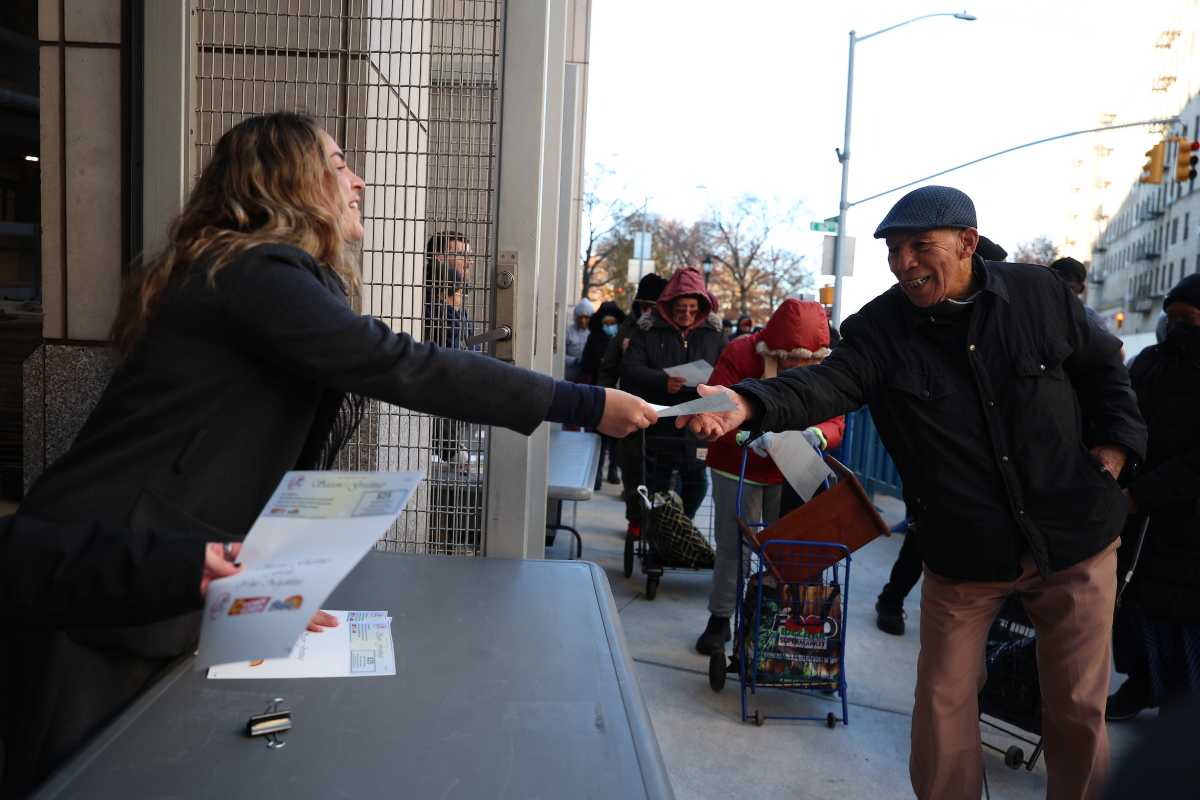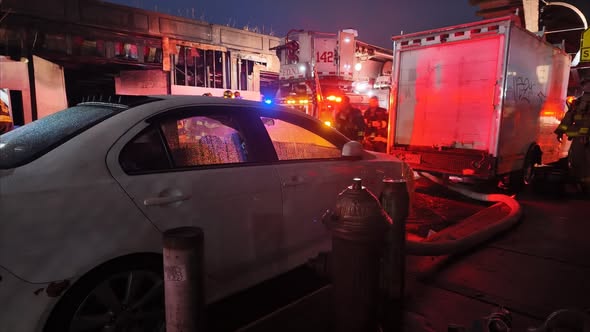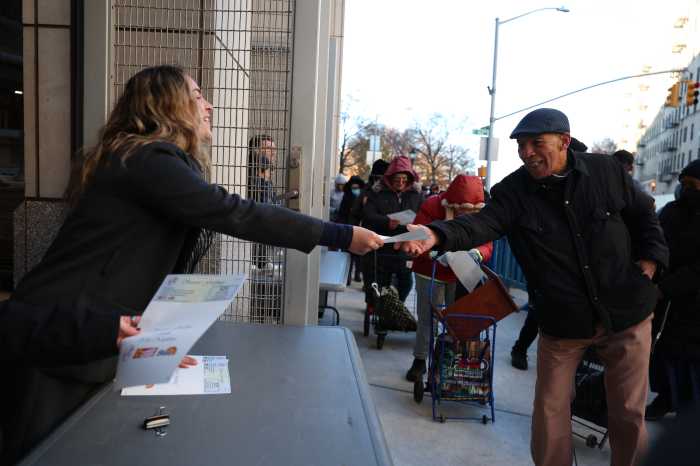By Julie Shapiro
Flashbulbs popped and BlackBerries whirred outside the U.S. Courthouse on Pearl St. Monday afternoon, half an hour after Bernard Madoff was sentenced to 150 years in prison.
All along Worth St., news vans idled, TV reporters spoke hurriedly into microphones and bloggers tapped furiously at their laptops.
At the center of the media maelstrom, sitting quietly under a tree with a large sketchpad in her lap, was Elizabeth Williams.
Williams bent over the heavy sheets of paper, and scenes from the courtroom gradually emerged: Madoff standing somberly as he read his statement; victims describing the damage Madoff wrought; and, finally, the judge pronouncing his decision. As Williams worked, the forms on the paper gathered color and weight, conveying the emotions that had filled the courtroom just an hour earlier.
“My job is to show the public what happened,” Williams said as she shaded Madoff’s face. “I am their eyes.”
Many in Lower Manhattan might know Williams as a longtime resident, a member of Community Board 1 and a leader of the First Precinct Community Council. But she spends her days chronicling the dramas of high-profile federal cases as quickly as she can sketch them, working as a freelance courtroom artist. Williams often provides the public with the only glimpse they will get into federal courthouses, because cameras are not allowed.
On Monday, Williams’s workday started shortly after 5 a.m., five hours before Judge Denny Chin called his courtroom to order for the Madoff sentencing. Media veterans were predicting the biggest turnout since Martha Stewart was sentenced five years ago, and Williams wanted to make sure she got her choice of seats. One of Williams’s television producers arrived at the courthouse at 3:30 a.m.
“By 6 o’clock, it really started to get crowded,” Williams said. “By 7, forget it.”
Inside the courtroom, Williams staked out a front corner of the jury box, where she’d have the best view. From that vantage point, she turned out more than a dozen sketches, looking for the one tableau that would best represent the unfolding story.
“Just draw everything and then ask later,” Williams said. “You never know what’s going to be the story and what’s not.”
Sometimes, a small detail that Williams notices tells the story in a big way. Her drawing of Madoff reading his statement, for example, shows him hunched forward, leaning on the table for support. Williams saw that he was having trouble standing, and his arms were shaking.
In contrast, when Madoff pleaded guilty in March, he stood upright and appeared much more self-assured, she said.
“These are historic, important moments that need to be captured,” Williams said. “That is why I’m there.”
Williams also captured an emotional scene on Monday when the former mayor of Fort Lee, N.J., broke down as he testified about his losses to Madoff. Williams drew the mayor covering his face with his hand, his wife beside him with her hand on his arm.
Williams drew only the black-and-white outlines of the scenes while she was in the courtroom, because she didn’t have time to add detail or color. After Madoff received his sentence, she moved outdoors to create her finished product, in the midst of the media frenzy surrounding the courthouse. A breeze ruffled the corners on her paper, and falling leaves occasionally drifted across the page. The day was warm and clear, much nicer than the below-freezing temperatures Williams sometimes faces.
Like the reporters around her who were rushing to file their stories, Williams, too, had a deadline to meet.
Gone are the days when Williams had the whole afternoon to complete her drawings, as long as they were done in time for the evening news. Now, under the ever-compressing news cycle of 24/7 Internet coverage, Williams often has less time than she needs to create the quality she wants.
“Here’s the problem,” Williams said as she finished off a Madoff scene, clutching several oil pastels in one hand and a felt-tipped pen in the other. “You have to get it done in a certain amount of time. The longer you take, the better the picture will be. But there’s also the deadline. You’re always in this tension between, Do I have it to them on time, and Is it good enough.”
On Monday, Williams was working for Bloomberg News and WABC-TV, and they wanted the finished drawings as soon as possible, and definitely by 2 p.m. As 1 p.m. approached, producers from both news outlets circled.
“Come right now — bring what you have,” an ABC staffer told Williams, and she hurriedly assembled her half-colored drawings. She ultimately turned in five finished pieces.
Williams likes to show as much of the background as possible in her detailed drawings, so that they convey not just the key players but also the feeling of what happened. That requires her to walk the line between news and artistic license, since she can’t get down every single detail while she’s in the courtroom.
One of the hardest things to remember is the color of everyone’s tie, she said. Madoff, though, is easy.
“He always wears the same color, dark purple,” Williams said as she filled in his navy suit. “I have to make the dark purple, because I don’t have it. How many times do you have the opportunity to do dark purple?”
Williams is often tempted to insert her own opinion into the pieces, but even if she were allowed to do that, she doesn’t have time to do anything but as faithful a rendering as possible.
Williams’s path toward courtroom artwork started in the early 1980s, when she was working as a fashion illustrator in Hollywood. The recession hit and work dried up, so one of her friends suggested that court work could bring in a steadier paycheck. Soon, Williams was hooked. She met artist Bill Robles in the halls of a Los Angeles courthouse, and he became her mentor.
In 1984, Williams moved to New York City, returning to the East Coast because she grew up in Upstate New York and loved the feeling of community the city offered.
Williams has studied art at Washington University in St. Louis, Parsons School of Design, Syracuse University and the Otis Art Institute. Her work has been featured in the country’s largest newspapers and regularly gets picked up by national and international wire services. In April, Williams’s drawing of a young Somali pirate breaking down in tears landed on the front cover of the New York Post.
Today, she lives in the Financial District with her husband and two teenage children.
Williams loves the unpredictability of her job. Before a court proceeding begins, she often asks the reporters she works with what they’re looking for in her drawings, but they can’t answer, because no one knows how the story will unfold.
“It’s got to happen first before you can draw it,” Williams said.
Julie@DowntownExpress.com

































